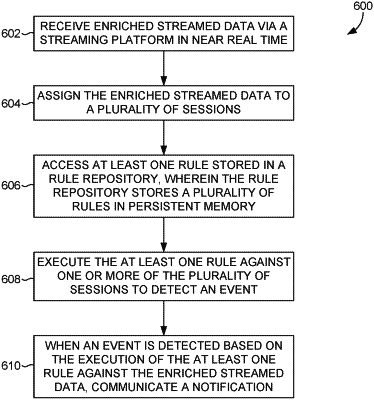| CPC H04L 65/61 (2022.05) [G06N 5/046 (2013.01); G06N 7/01 (2023.01); G06N 20/00 (2019.01); H04L 65/1083 (2013.01)] | 30 Claims |

|
1. A computerized method for real-time rule execution and event detection in a data streaming environment, the method comprising:
partitioning streamed data to create a plurality of concurrent sessions based on a plurality of identifiers in the streamed data, each session of the plurality of concurrent sessions being associated with a different corresponding identifier of the plurality of identifiers, and each session of the plurality of concurrent sessions comprising data items of the streamed data that are associated with the corresponding identifier;
for at least one session of the plurality of concurrent sessions:
executing a rule against the data items in the at least one session;
detecting an event in the at least one session based on a threshold associated with the rule;
adjusting the threshold associated with the rule in response to detecting the event in the at least one session; and
storing information regarding the data items in the at least one session, the rule that is executed, and the event that is detected; and
tearing down one or more of the plurality of concurrent sessions based on a predefined time period expiring since the creation of the one or more of the plurality of concurrent sessions.
|